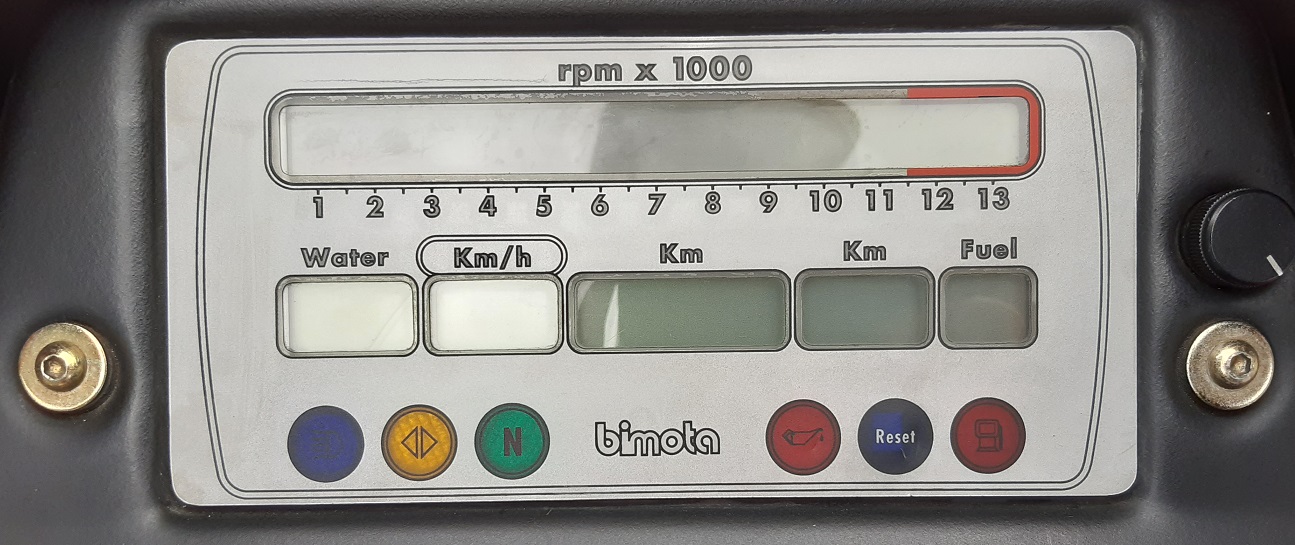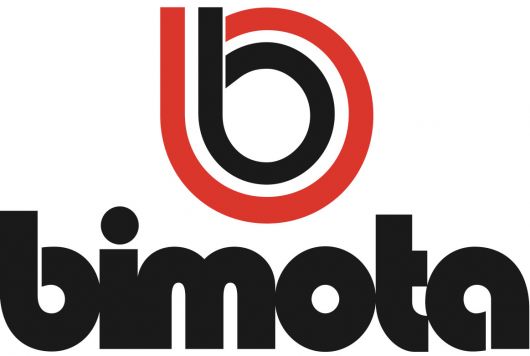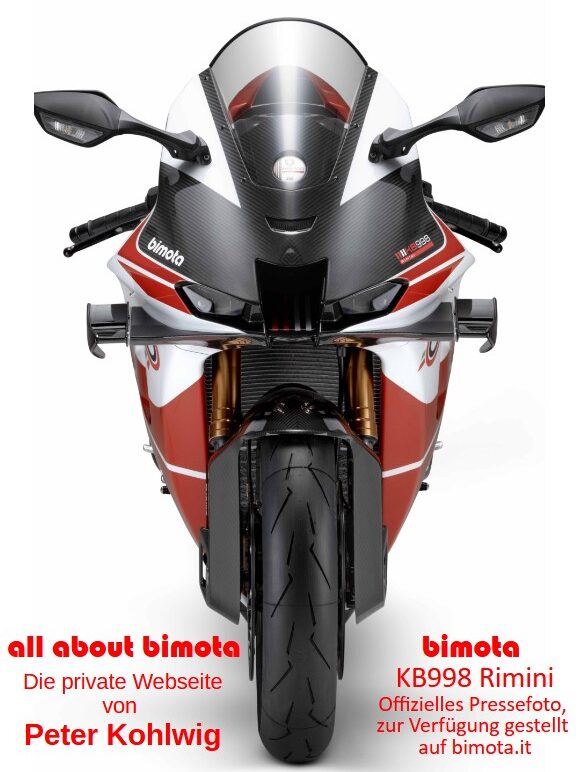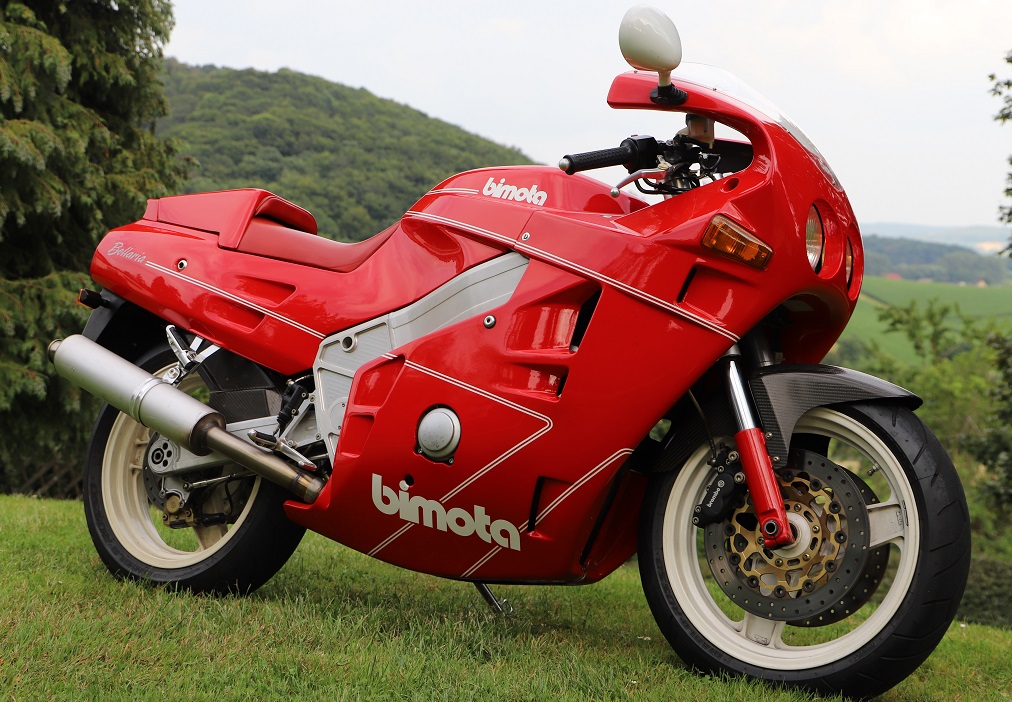
| Designer | Pier Luigi Marconi | First presentation | Mailand 1989 |
| Production period | 1990 – 1993 | Production Numbers | 145 incl. 3 Kits |
| Power | 69 KW (95 PS) | Displacement | 599 ccm |
| Topspeed | 240 km/h | Weight | wet 212 kg dry 195 kg |
| Price | 33.950 DM (1990) | Colours | 125 light blue 17 red |
| Technical Basis | Yamaha FZR 600 |
With the YB9 Bellaria, Bimota introduces a model to the market that is unusual in several aspects, given that the brand has primarily been known for uncompromising sports motorcycles. After the KB2, it is the second model with a smaller engine displacement. Following the KB1, YB5, and SB5, it is the fourth model to feature a pillion seat and the first ever to offer a more comfortable seating position. To achieve this, the clip-on handlebars are mounted above the triple clamp, and the footpegs are positioned slightly lower. The design of the fairing and monocoque creates a sport-tourer, although the pillion seat is not particularly practical due to the high placement of the rear footpegs.
A cover that transforms the Bellaria back into a single-seater aesthetically is included as standard. Thus, the Bellaria is more of a sporty, highly agile motorcycle designed for spirited solo rides through winding roads.
The Bellaria (named after a small town near Rimini) was unveiled at the 1989 Milan Motor Show. The four-valve engine comes from the Yamaha FZR 600 (3HE). The chassis (frame and swingarm) is almost identical to that of the YB4/6/7, with modifications to accommodate the smaller engine. Upon closer inspection, however, there are differences, such as the cross brace in the frame above the swingarm mount, where the Bimota logo is milled in. This detail is not visible without removing the monocoque but impressively demonstrates the passion that goes into crafting these motorcycles.
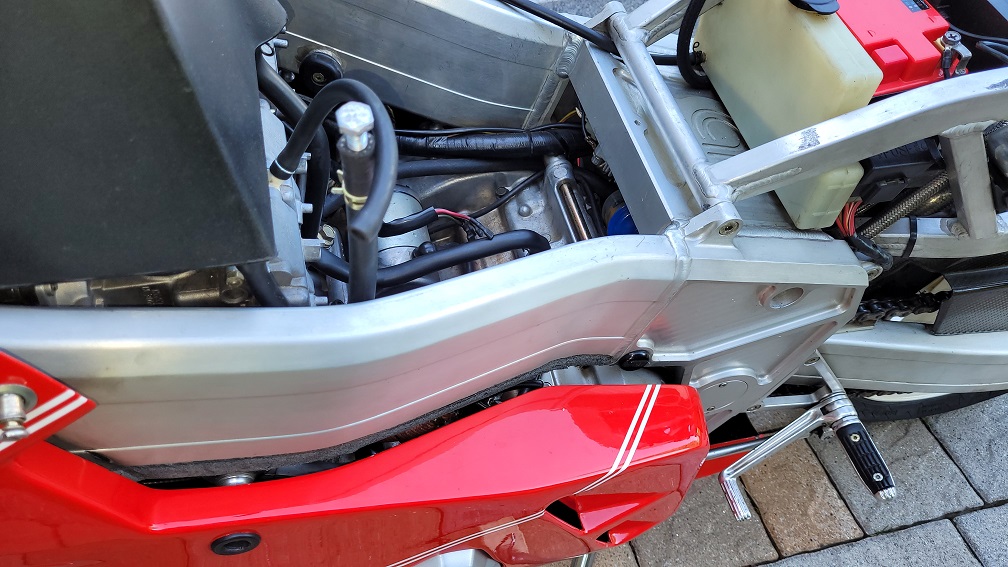
The chassis is completed with a 40 mm Marzocchi upside-down fork at the front and a gas-assisted Marzocchi rear shock absorber, adjustable in 10 steps for compression and 8 steps for rebound damping. The braking system includes two floating 320 mm discs with Brembo four-piston calipers at the front and a 250 mm disc at the rear.
The digital LCD dashboard, also used in the Tesi and YB6 Tuatara, fails to win over testers in the Bellaria as well. At the time the German Magazine, ADAC Motorradwelt criticized it, stating:
„They are hard to read and stylistically suit this ‘Bella Macchina’ about as well as lederhosen in the Milan Scala.“
